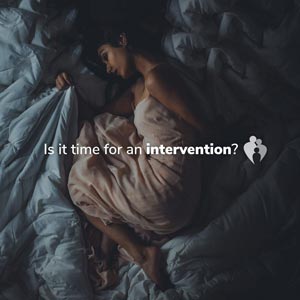Interventions Are Not Ultimatums
Ultimatums contain demands that are final. The loved one sees them as a rejection, and they lead to the relationship with the family breaking down. Ultimatums rarely work short term, and never work long term because addicts and alcoholics suffer from rejection issues.
Addicts and alcoholics certainly need consequences resulting from their behavior, but they need those consequences to derive from their decisions, and not because of enforced rules or ultimatums.
Addicted individuals are very stubborn, and when ultimatums are made, a standoff of wills occurs, with the family rarely outlasting their loved one, eventually giving in.
Addicts and alcoholics are perfect examples of individuals doing the opposite of what they’re told. You’re almost better off telling them the opposite of what you want to get the desired result – aka reverse psychology.
“If you don’t show up to work, you will be fired” is an ultimatum most people would heed. Again, most people, fearing the loss of employment and being unable to pay their bills, would go to work.
Addicts and alcoholics don’t think that way and would blame everything that went wrong on their boss rather than own their actions.
This is not to say that others wouldn’t do the same, but addicts and alcoholics take it to the extreme.
Enforcing ultimatums precludes the opportunity to learn about your loved one’s problems, thus weakening the relationship. Furthermore, ultimatums fuel resentment within the addict or alcoholic, and that impedes the recovery process.
The Problem Can’t Deliver the Solution
Addicts and alcoholics are stubborn, selfish people. As a result, it is almost impossible for them to own their problems and to look inward.
They need to blame every other person, place or thing in an effort to take the focus off themselves. When the family, seen by them as the problem, tries to offer any solution, the addict or alcoholic receives it negatively and views it as punishment.
If addiction could be treated simply by enforcing tough love and ultimatums, we wouldn’t have addiction issues, and wouldn’t need treatment centers.
Consequences delivered properly through the intervention process can lead the loved one to a treatment center, but consequences alone do not produce long-term sobriety.
Many families of addicts think tough love and ultimatums will lead their loved ones to swear off drugs and alcohol forever. Families fail to realize that this model doesn’t apply to them because people suffering from addiction don’t operate in a traditional manner.
Addiction is a disease of the mind, and consequences alone do not make the loved one clean and sober. If consequences alone could achieve that, you wouldn’t be reading this.
Addiction is about avoiding discomfort. As long as it’s more comfortable to take drugs or drink alcohol than it is to work through a program of recovery, then substance use is the path the addict or alcoholic will take.
The long-term goal of an intervention is to have the loved one hold him or herself accountable, to undertake a program of recovery and to do the next right thing, even when nobody is watching. Prior to the intervention, the family has been dealing with their loved one in ways that haven’t been conducive to a successful outcome.
An intervention helps pass the torch so that the loved one can move forward in a healthy way, and peace and sanity can progressively be restored in the family.








 All Rights Reserved |
All Rights Reserved |